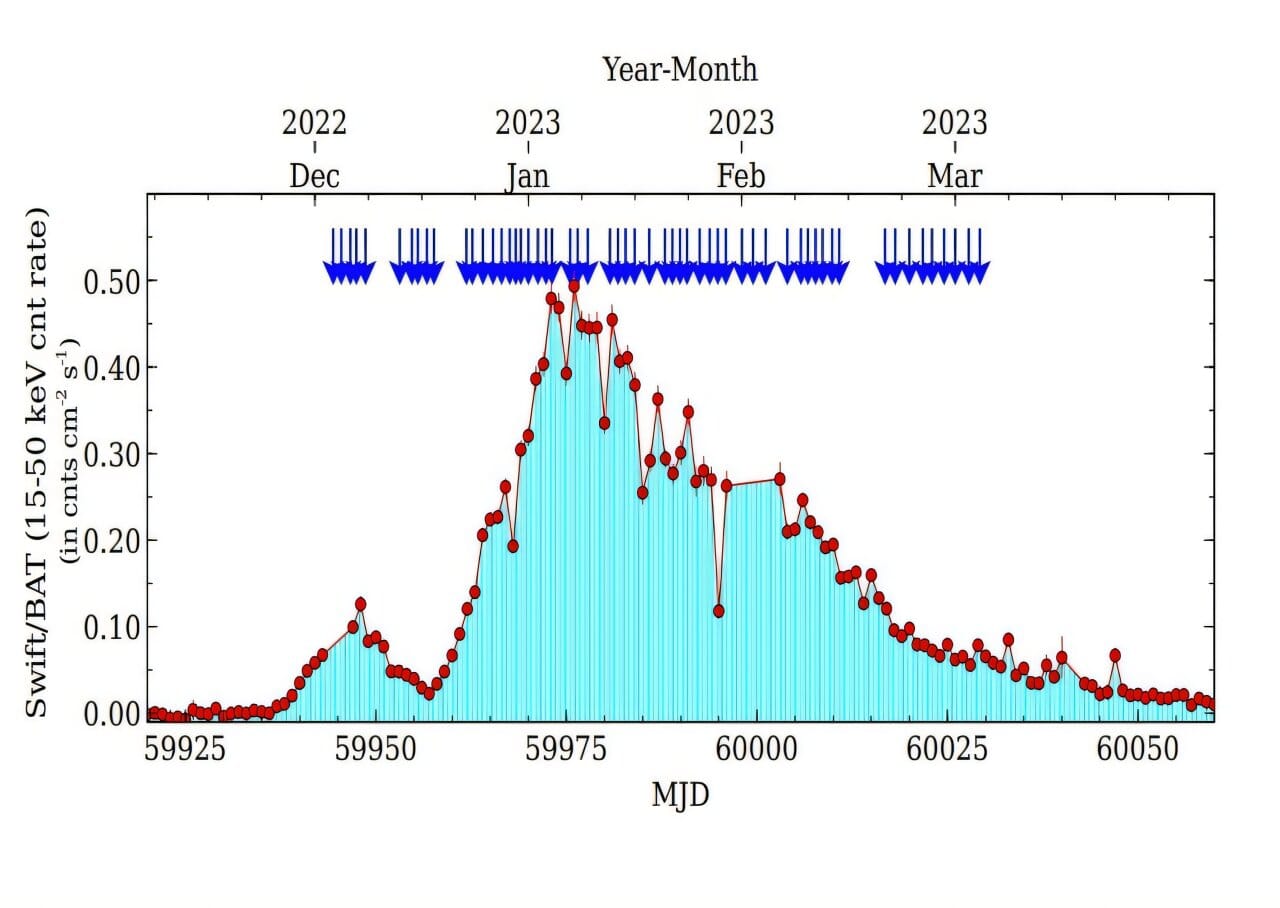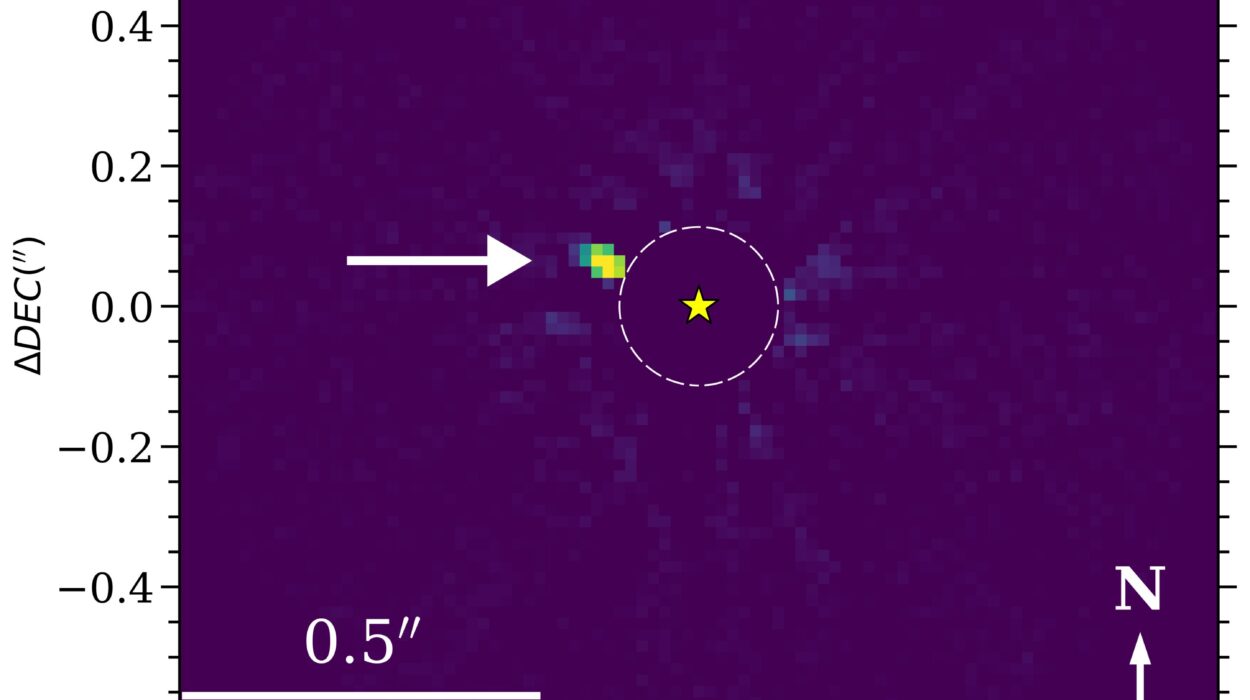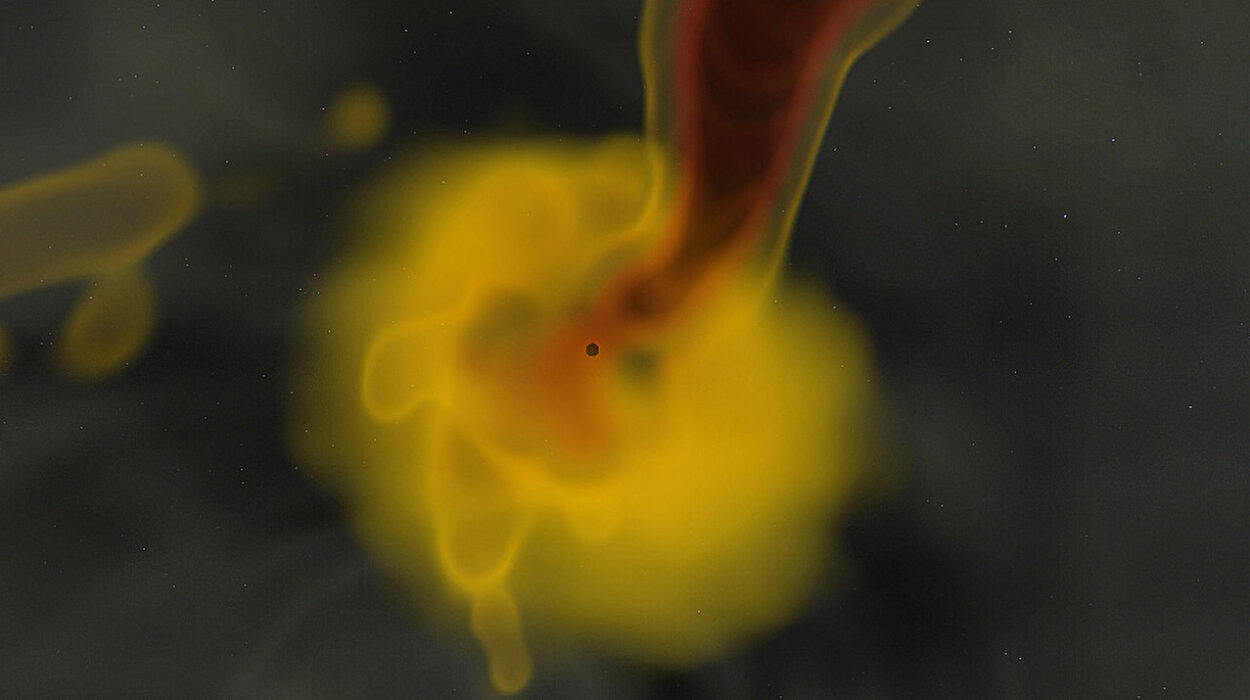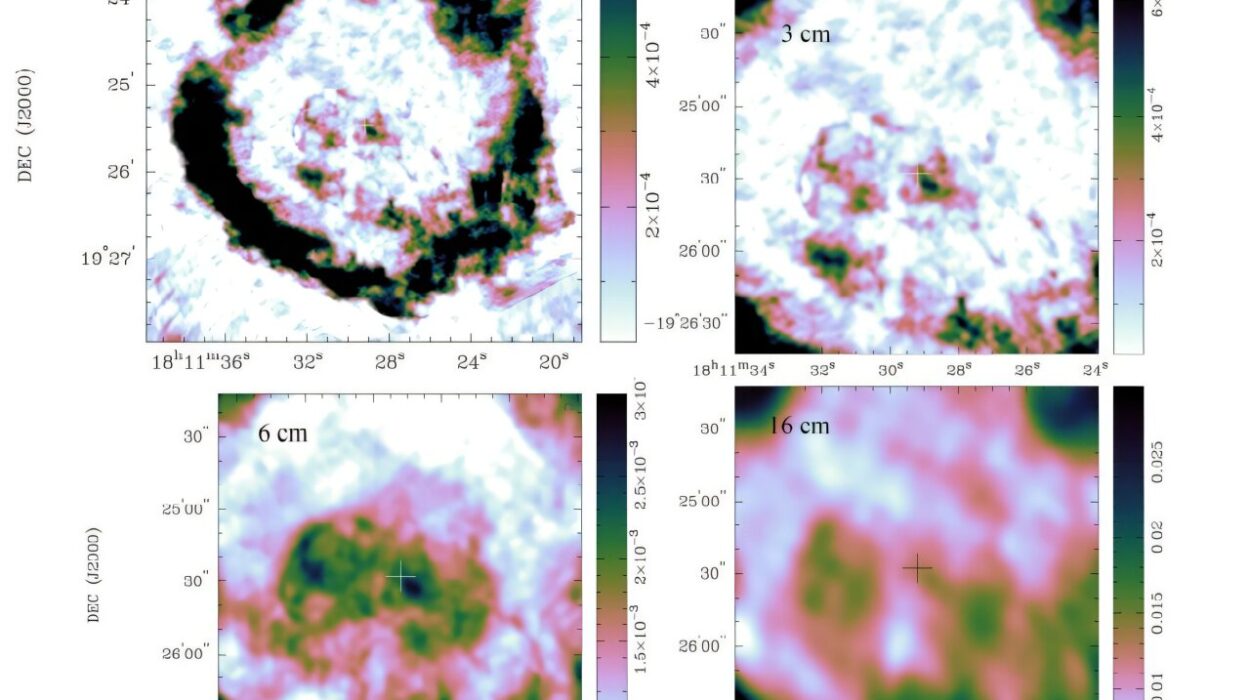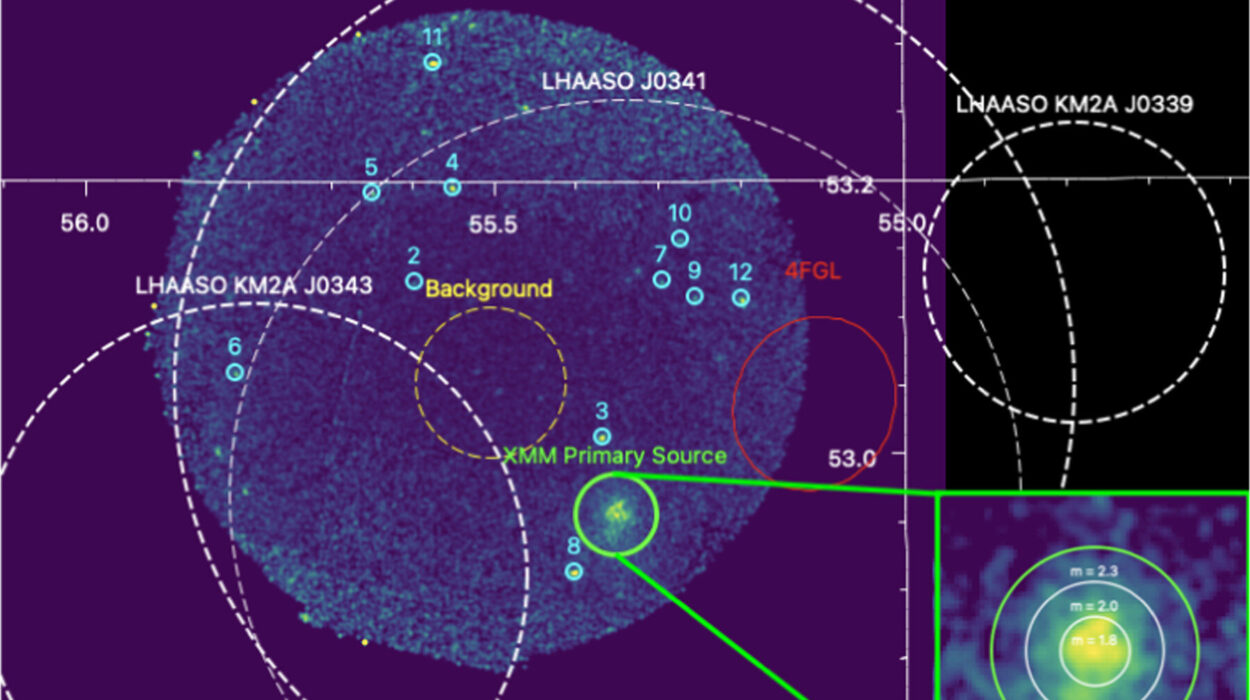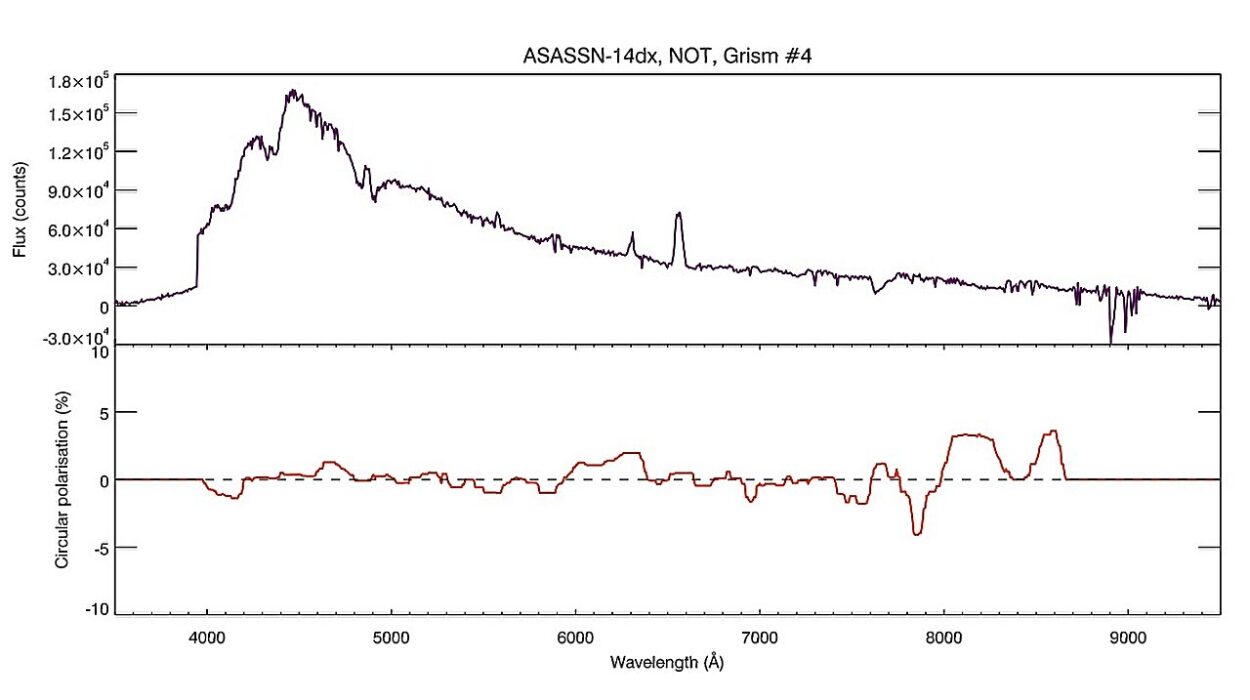High above our heads, where the vacuum of space is pierced by energetic radiation and swirling plasma, a stellar story unfolded in breathtaking silence. It began in late December 2022, nearly 8,000 light-years from Earth, in a violent and enigmatic binary star system named RX J0440.9+4431. This quiet corner of the galaxy briefly erupted into brilliance, unleashing one of the most powerful outbursts ever recorded from this system.
Now, a new study from astronomers at Wuhan University in China has brought this event into sharp focus. Using the country’s Insight-HXMT satellite, scientists have captured unprecedented details of the outburst—observing its timing, spectrum, and revealing strange clues about its hidden heart: a spinning neutron star, or pulsar, with a magnetic field billions of times stronger than anything found on Earth.
This discovery not only deepens our understanding of this remarkable binary system, but also sheds light on some of the most extreme phenomena in the universe.
A Violent Partnership in Deep Space
RX J0440.9+4431 belongs to a rare and fascinating class of objects known as Be/X-ray binaries—a subset of high-mass X-ray binaries (HMXBs). In these cosmic pairings, a massive, hot OBe star—a kind of blue-white giant surrounded by a dense disk of material—lives in a gravitational dance with a compact neutron star, the collapsed core of a once-mighty star.
These systems are not quiet neighbors. The neutron star, with its incredible gravity, gradually siphons material from its massive companion’s disk. As the gas spirals in, it becomes compressed and heated, emitting blazing X-rays. Sometimes, the accretion becomes unstable and surges dramatically—an event known as an X-ray outburst.
This is what happened in RX J0440.9+4431 between December 2022 and March 2023—a spectacular, months-long flare-up that caught the attention of Dr. Prahlad R. Epili and Dr. Wei Wang at Wuhan University. Their analysis, published on July 24 via the preprint server arXiv, provides a detailed look into the mechanisms that fuel such intense events—and the extreme environment surrounding this binary pair.
Listening to a Pulsar’s Heartbeat
At the center of this celestial tempest lies a pulsar, the ultra-dense core of a long-dead massive star. Barely 20 kilometers across, yet more massive than the Sun, the pulsar in RX J0440.9+4431 rotates with an eerie precision. Every 202.5 seconds, it sweeps its energetic beam of radiation across space, like the spinning light of a cosmic lighthouse.
Using data from Insight-HXMT—China’s first X-ray astronomical satellite—the researchers captured how the pulse profile of the neutron star changed throughout the outburst. Surprisingly, they found that even at similar luminosities, the shape of the pulses evolved in complex ways as the outburst grew and faded.
This variation, the scientists explain, suggests that the structure of the accretion column—where matter crashes onto the neutron star’s surface—is highly sensitive to the overall energy output. Like wind reshaping a flame, the incoming matter may distort the magnetic field and the emission beam, depending on how much fuel is being consumed.
Such discoveries give astronomers a rare look into the dynamics of matter under gravity and magnetic fields so intense that atoms themselves are squeezed into exotic states.
Unimaginable Energy From a Tiny Star
During the outburst, the pulsar’s energy output soared. The team measured its X-ray luminosity in the 1–120 keV range—a common energy band for space-based X-ray telescopes—and found values between 4.4 and 28 undecillion ergs per second. That’s 4.4 to 28 followed by 36 zeros in raw energy terms—roughly comparable to what our entire Sun emits in all directions, but focused into the X-ray spectrum.
This enormous luminosity was modeled using a common technique known as a cutoff power-law continuum, which is frequently used to describe how energy is distributed in extreme environments like those found near black holes and neutron stars. The model successfully captured the high-energy behavior of the pulsar during different phases of the outburst.
But what truly astonished researchers was the telltale signature hidden within that light—a kind of cosmic fingerprint revealing something profound about the neutron star’s magnetic muscle.
Traces of Magnetic Monsters
When high-energy X-rays scatter off electrons trapped in a strong magnetic field, they leave a distinctive mark on the spectrum—an absorption feature known as a Cyclotron Resonance Scattering Feature (CRSF). These lines act like a magnetometer, allowing scientists to estimate the strength of the magnetic field at the site of emission.
Insight-HXMT data revealed not one, but two cyclotron lines in RX J0440.9+4431’s outburst. The first, varying between 33.6 and 41.6 keV, was present throughout the event. But during the declining phase of the outburst, a second feature appeared between 64.6 and 75.3 keV—a rare and tantalizing signature.
These observations suggest a strong, dynamic magnetic field, changing as the neutron star’s accretion rate fluctuates. Using these measurements, the team estimated the magnetic field to be between 4.8 and 15.4 trillion Gauss—up to a million billion times stronger than Earth’s.
Such magnetic intensity defies our everyday imagination. It’s strong enough to bend atomic structures, distort light paths, and possibly even influence the vacuum of space itself. Studying it helps physicists test theories of quantum mechanics under extreme conditions, far beyond anything replicable on Earth.
Unraveling the Story of RX J0440.9+4431
The neutron star in RX J0440.9+4431 is more than a cosmic curiosity—it is a natural laboratory for exploring physics at the very edge of possibility. From the way it pulses to the immense forces that surround it, this tiny object tells a grand story of stellar life, death, and rebirth.
Originally discovered in 1997 during the ROSAT Galactic Plane Survey, RX J0440.9+4431 has long intrigued astronomers with its regular X-ray pulsations and optical counterpart—an OBe star cataloged as LS +44 17 / BSD 24-491. Its history is one of quiet intervals punctuated by wild outbursts, each providing new insights into how stars interact in close binary systems.
But this latest eruption, captured in exquisite detail by China’s Insight-HXMT mission, is by far the most revealing.
It not only confirms that Be/X-ray binaries like RX J0440.9+4431 are dynamic and complex, but also shows how cutting-edge space telescopes can unravel their secrets in real time.
Why This Matters: A Window Into Extreme Physics
At first glance, the story of a flickering light 8,000 light-years away might seem distant, even irrelevant. But the science of such systems speaks directly to fundamental questions: How do stars die? What happens to matter in the most extreme environments? How do gravity and magnetism behave when pushed to their limits?
These questions are not just theoretical. The physics of X-ray binaries feeds directly into our understanding of black holes, gamma-ray bursts, gravitational waves, and even the early universe. The behavior of magnetic fields near neutron stars could hold clues to the formation of magnetars—supermagnetized neutron stars that may produce mysterious fast radio bursts.
Moreover, missions like Insight-HXMT, operated by the Chinese Academy of Sciences, are helping diversify and expand global space science. With each outburst observed and each spectrum analyzed, humanity steps closer to mastering the high-energy universe.
A Stellar Firestorm, A Human Triumph
The outburst from RX J0440.9+4431 is now over. The storm has passed. But thanks to the persistent eyes of Insight-HXMT and the keen minds at Wuhan University, its light will never be forgotten.
In a cosmos teeming with violence and mystery, astronomers continue to act as cosmic archaeologists, deciphering ancient signals that whisper across the void. Their work connects us—not only to the stars, but to the fundamental laws that govern all things, from the deepest black hole to the atoms in our own bodies.
And perhaps, as Einstein once mused, the most beautiful experience we can have is this very sense of the mysterious—made less mysterious, one X-ray at a time.
More information: Prahlad R. Epili et al, Insight-HXMT Spectral and Timing Studies of a Giant Outburst in RX J0440.9+4431, arXiv (2025). DOI: 10.48550/arxiv.2507.18676
